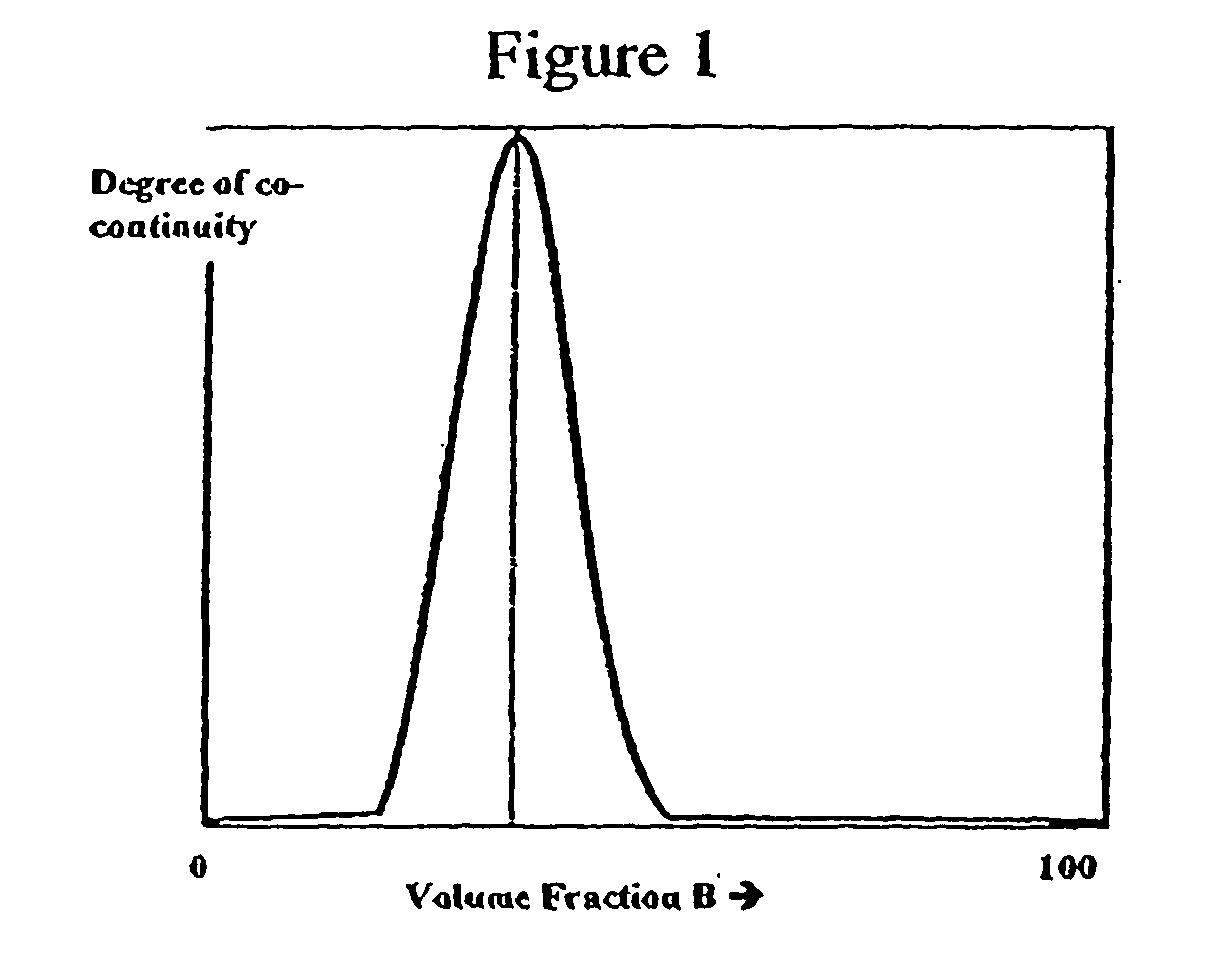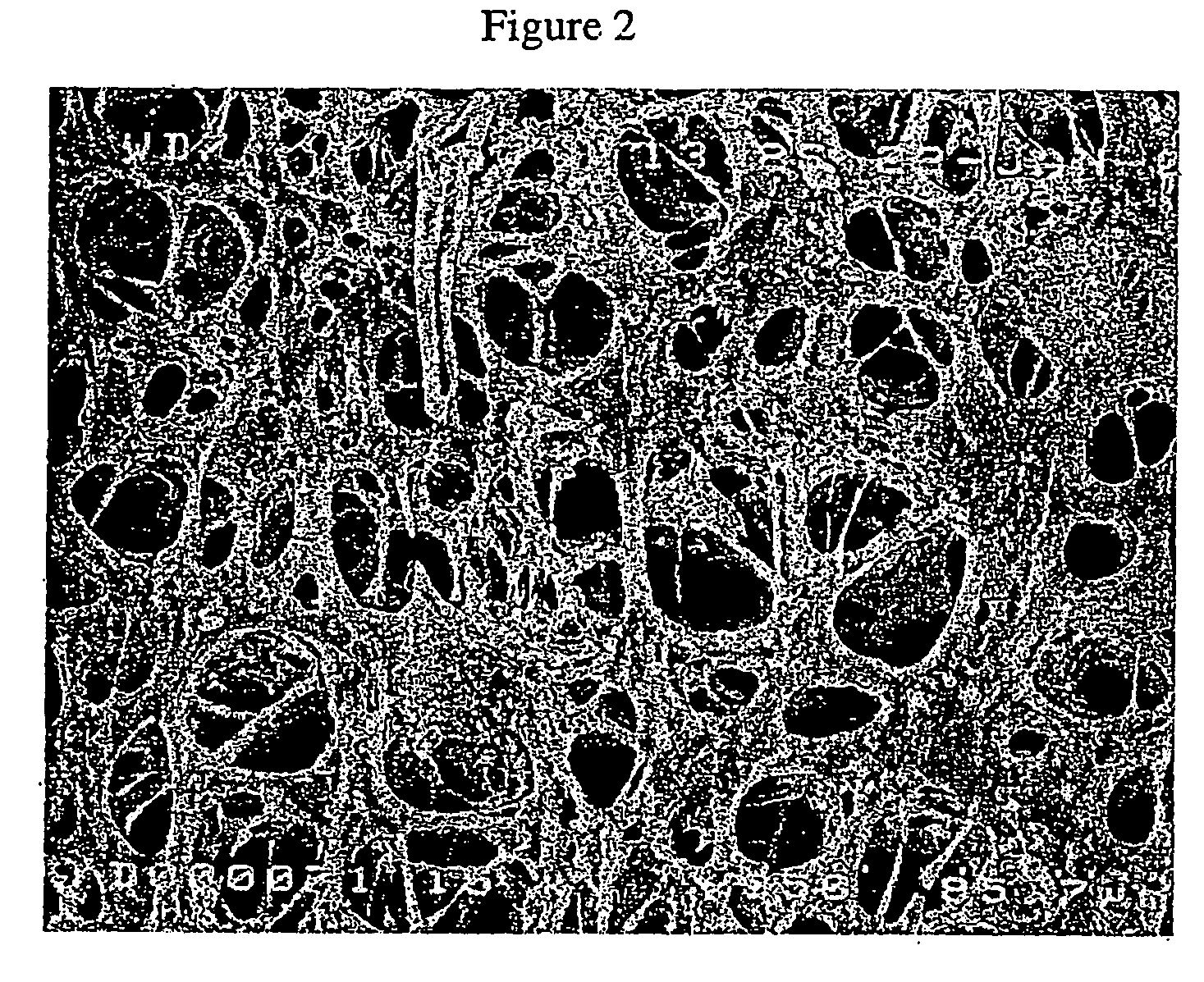Co-continuous phase composite polymer blends for in-vivo and in-vitro biomedical applications
a biomedical and composite polymer technology, applied in the field of co-continuous phase composite polymer blends for in-vivo and invitro biomedical applications, can solve the problems of mechanical and biochemical compatibility of the implant structure with the body environment, the inability to make biomedical implants from waste plastic recycling streams, and the jeopardization of the process and the structure before. , to achieve the effect of promoting tissue ingrowth and promoting the ingrowth of adjoining tissu
- Summary
- Abstract
- Description
- Claims
- Application Information
AI Technical Summary
Benefits of technology
Problems solved by technology
Method used
Image
Examples
examples
[0055] A series of composite materials were prepared and evaluated as described below.
[0056] Materials. Polymethylmethacrylate (PMMA) was obtained from GE corporation in the form of pellets suitable for extrusion processing. Two grades of polylactic acid (L210 and L207S) were obtained from Boehringer Ingelheim Corporation, Germany in the form of granular powders. Both materials are pure lactides with molecular weights in the range of 113,000 to 300,000 as shown in Table 1. Approximate physical properties for both materials are given in Table 2.
TABLE 1Molecular Weight Calculations for PLAInherentBoehringerViscosityMark-Mark-Mv =Trade NameMaterial No.Lot Number(dl / g)Houwing KHouwing a([η] / K)1 / n[η]= KMvaPLA L21060640645100054903.91.29E − 040.822910683.90E + 00PLA L207S 51923 10050101.81.29E − 040.821133681.80E + 00
[0057] Note: Inherent Viscosity from Boerhinger Specification Sheets; value for L210 is the average value [3.4,4.4]. Constants K and a from Boehringer Spec: Fischer, Sten...
PUM
| Property | Measurement | Unit |
|---|---|---|
| volume fraction | aaaaa | aaaaa |
| volume fraction | aaaaa | aaaaa |
| diameter | aaaaa | aaaaa |
Abstract
Description
Claims
Application Information
 Login to View More
Login to View More - R&D
- Intellectual Property
- Life Sciences
- Materials
- Tech Scout
- Unparalleled Data Quality
- Higher Quality Content
- 60% Fewer Hallucinations
Browse by: Latest US Patents, China's latest patents, Technical Efficacy Thesaurus, Application Domain, Technology Topic, Popular Technical Reports.
© 2025 PatSnap. All rights reserved.Legal|Privacy policy|Modern Slavery Act Transparency Statement|Sitemap|About US| Contact US: help@patsnap.com



